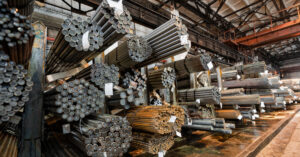
According to preliminary data, Ukrainian metallurgical companies increased their total rolled steel production by 3.9% in January-November this year compared to the same period last year, from 5.741 million tons to 5.966 million tons.
According to information from the Ukrmetallurgprom association on Monday, steel production during this period fell by 3.1% to 6.813 million tons. In November, 589,100 tons of rolled steel and 641,100 tons of steel were produced.
For more information on the largest steel producers and global industry trends, see the Experts Club video analysis review available on YouTube: Experts Club — Leaders of the global steel industry 1990–2024
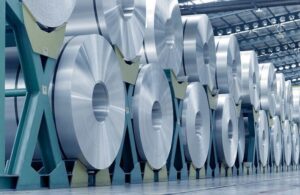
According to the results of 2024, Ukraine increased its apparent steel use in crude steel equivalent by 10.9% compared to 2023, from 3.987 million tons to 4.423 million tons.
According to the annual compilation published by Worldsteel, Ukraine increased its apparent steel consumption in finished product equivalent by 5.6% compared to 2023, to 3.633 million tons from 3.439 million tons.
At the same time, Ukraine produced 7.575 million tons of steel in 2024 (6.228 million tons in 2023), and last year’s pig iron production amounted to 7.090 million tons (6.003 million tons), of which 1.235 million tons (1.248 million tons) were exported.
At the same time, steel consumption per capita reached 117 kg (106 kg/person in 2023).
On average, global apparent steel consumption (in crude steel equivalent) per capita last year was 228 kg (in 2023 – 234 kg/capita), and finished products – 96 (91) (kg/capita). At the same time, the world consumed 1 billion 750.004 million tons of steel in 2024 and 1 billion 777.949 million tons in 2023.
Last year, Ukraine mined 50.584 million tons of iron ore (in 2023 – 27.048 million tons) and exported 35.695 million tons (17.749 million tons). Scrap metal exports amounted to 288,000 tons (182,000 tons).
In 2024, Ukraine exported 511,000 tons of pipe products, in 2023 – 356,000 tons, and imported 105,000 tons (111,000 tons).
For more information on the largest steel producers and global industry trends, see the Experts Club video analysis review available on YouTube: Experts Club — Leaders of the global steel industry 1990–2024
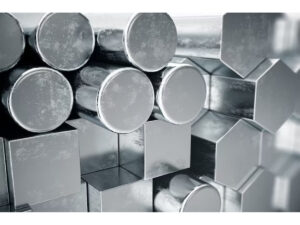
Global stainless steel production in January-September this year increased by 3% compared to the same period last year, from 46.623 million tons to 48.020 million tons.
These figures are given in a press release from the International Stainless Steel Association (formerly the International Stainless Steel Forum, ISSF).
According to the information, in the third quarter of 2025, production reached 16.1 million tons, which is 2.3% more than in July-September 2024.
At the same time, stainless steel output in Europe decreased by 4.2% to 4.498 million tons during this period. In the US, production increased by 9.3% to 1.649 million tons.
In Asia (excluding China and South Korea), stainless steel production increased by 1.1% to 10.771 million tons, and in China, it increased by 4.7% to 30.453 million tons.
In other regions (Brazil, Russia, South Africa, South Korea, and Indonesia), production fell by 5.7% to 649,000 tons.
As reported, global stainless steel production in 2024 increased by 7% compared to 2023, to 62.621 million tons from 58.539 million tons, with production growing in all major regions.
At the same time, stainless steel production in Europe in 2024 increased by 1.5% to 6.088 million tons. In the US, production increased by 6.9% to 1.950 million tons. In Asia (excluding China and South Korea), stainless steel production increased by 6.4% to 7.322 million tons, and in China it grew by 7.5% to 39.441 million tons. In other regions (Brazil, Russia, South Africa, South Korea, and Indonesia), production increased by 9.2% to 7.820 million tons.
Global stainless steel production in 2023 increased by 4.6% compared to 2022, to 58.444 million tons. Overall, stainless steel production in Europe fell by 6.2% to 5.902 million tons this year, and in the US by 9.6% to 1.824 million tons. Meanwhile, in Asia (excluding China and South Korea), stainless steel production decreased by 7.2% to 6.880 million tons, while in China it increased by 12.6% to 36.676 million tons. Other regions (Brazil, Russia, South Africa, South Korea, and Indonesia) saw a 5.2% decline in production to 7.163 million tons.
Global stainless steel production in 2022 decreased by 5.2% compared to 2021, to 55.255 million tons. At the same time, production in Europe fell by 12.4% to 6.294 million tons, and in the US by 14.8% to 2.017 million tons. In Asia (excluding China and South Korea), stainless steel production decreased by 4.9% to 7.411 million tons, and in China by 2% to 31.975 million tons. Other regions saw a 9.1% decline in production to 7.557 million tons.
Earlier, the Experts Club information and analytical center released a video dedicated to global steel production and leading producing countries – https://www.youtube.com/shorts/VgUU9MEMosE
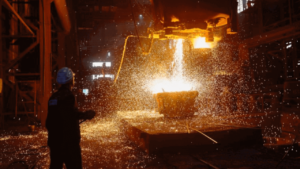
Global steel production in October 2025 decreased by 5.9% compared to October 2024, to 143.340 million tons, with declines recorded in most of the top ten producing countries, according to data from the World Steel Association (Worldsteel).
The top ten countries in terms of steel production in October 2025 are as follows:
China – 72 million tons (down 12.1% compared to October 2024);
India – 13.563 million tons (up 5.9%);
USA – 6.989 million tons (up 9.4%);
Japan – 6.853 million tons (down 1%);
Russia – 5.250 million tons (down 6.2%);
South Korea – 5.093 million tons (down 5.8%);
Iran – 3.316 million tons (up 12%);
Turkey – 3.208 million tons (up 3.1%);
Germany – 3.127 million tons (down 3%);
Brazil – 2.988 million tons (down 2.7%).
In January-October 2025, global steel production decreased by 2.1% compared to the same period in 2024, to 1 billion 517.589 million tons. The top ten producing countries for the first ten months of this year are:
China – 817.870 million tons (down 3.9% compared to January-October 2024);
India – 135.987 million tons (up 10%);
USA – 68.376 million tons (up 2.8%);
Japan – 67.327 million tons (down 4.1%);
Russia – 56.536 million tons (down 4.9%);
South Korea – 51.144 million tons (down 3.6%);
Turkey – 31.277 million tons (up 1.2%);
Germany – 28.505 million tons (down 9.9%);
Brazil – 27.988 million tons (down 1.8%);
Iran – 25.442 million tons (down 1%).
At the end of 2024, 71 countries produced 1 billion 839.449 million tons of steel, which is 0.9% less than in 2023. The leaders were China – 1 billion 5.090 million tons (down 1.7%), India – 149.587 million tons (up 6.3%), Japan – 84.009 million tons (down 3.4%), the United States – 79.452 million tons (down 2.4%), Russia – 70.690 million tons (down 7%), South Korea – 63.531 million tons (down 4.7%), Germany – 37.234 million tons (up 5.2%), Turkey – 36.893 million tons (up 9.4%), Brazil – 33.741 million tons (up 5.3%), and Iran – 30.952 million tons (up 0.8%).
In 2023, 71 countries produced 1 billion 849.734 million tons of steel (down 0.1% from 2022), and in 2022, 64 countries produced 1 billion 831.467 million tons (down 4.3% from 2021), with China continuing to dominate and production growing in India amid declining performance in most developed economies.
Earlier, the Experts Club analytical center released a video analysis of the world’s leading steel producers from 2001 to 2024 – https://youtube.com/shorts/VgUU9MEMosE?si=c5yD04gmNtJoFblB
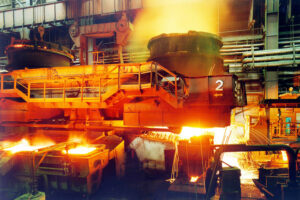
In October 2025, Ukrainian metallurgical companies increased steel production by 7.3% compared to October 2024, from 604,000 tons to 648,000 tons, but reduced it by 5.9% compared to September 2025 (689 thousand tons), according to data from the World Steel Association (Worldsteel).
According to the association’s report, Ukraine ranked 21st among 70 steel-producing countries in October.
In January-October 2025, Ukrainian steel companies produced 6.172 million tons of steel, which is 4.9% less than in the same period of 2024 (6.487 million tons). Ukraine ranks 22nd in the world in terms of this indicator.
In 2024, Ukraine produced 7.575 million tons of steel, increasing production by 21.6% compared to 2023 (6.228 million tons) and ranked 20th among 71 countries. In 2023, steel production in the country decreased by 0.6% compared to 2022, to 6.228 million tons, and Ukraine ranked 22nd in the global ranking.
At the end of 2022, Ukraine produced 6.263 million tons of steel, which is 70.7% less than in 2021, and ranked 23rd among 64 countries covered by Worldsteel.
Earlier, the Experts Club analytical center released a video analysis of the world’s leading steel producers from 2001 to 2024 – https://youtube.com/shorts/VgUU9MEMosE?si=c5yD04gmNtJoFblB
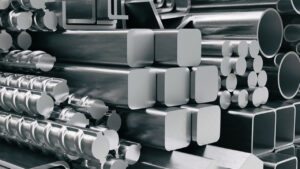
In October of this year, Ukrainian metallurgical companies increased steel production by 7.3% compared to the same period last year, from 604,000 tons to 648,000 tons, but decreased by 5.9% compared to the previous month (611,000 tons).
In the ranking of global producers of this product, compiled by the World Steel Association (Worldsteel), Ukraine ranked 21st among 70 countries.
According to Worldsteel, in October 2025, there was a decrease in steel production compared to October 2024 in most of the top ten countries, except for India, the US, Turkey, and Iran.
The top ten steel-producing countries in October were as follows: China – 72 million tons (down 12.1% compared to October 2024), India – 13.563 million tons (up 5.9%), the US – 6.989 million tons (+9.4%), Japan – 6.853 million tons (-1%), Russia – 5.250 million tons (-6.2%), South Korea – 5.093 million tons (-5.8%), Iran – 3.316 million tons (+12%), Turkey – 3.208 million tons (+3.1%), Germany – 3.127 million tons (-3%), and Brazil – 2.988 million tons (-2.7%).
Overall, steel production in October this year decreased by 5.9% compared to the same period last year, to 143.340 million tons.
Based on the results of the first ten months of this year, the top ten steel-producing countries are as follows: China – 817.870 million tons (-3.9% compared to January-October 2024), India – 135.987 million tons (+10%), the United States – 68.376 million tons (+2.8%), Japan – 67.327 million tons (-4.1%), Russia – 56.536 million tons (-4.9%), South Korea – 51.144 million tons (-3.6%), Turkey – 31.277 million tons (+1.2%), Germany – 28.505 million tons (-9.9%), Brazil – 27.988 million tons (-1.8%), and Iran – 25.442 million tons (-1%).
Over the first ten months of this year, Ukrainian steel companies reduced steel production by 4.9% compared to the same period last year, from 6.487 million tons to 6.172 million tons. The country ranked 22nd.
In general, global steel production in January-October 2025 decreased by 2.1% compared to the same period in 2024, to 1 billion 517.589 million tons.
As reported, at the end of 2024, the top ten steel-producing countries among 71 countries were as follows: China – 1 billion 5.090 million tons (-1.7%), India – 149.587 million tons (+6.3%), Japan – 84.009 million tons (-3.4%), the United States – 79.452 million tons (-2.4%), Russia – 70.690 million tons (-7%), South Korea – 63.531 million tons (-4.7%), Germany – 37.234 million tons (+5.2%), Turkey – 36.893 million tons (+9.4%), Brazil – 33.741 million tons (+5.3%), and Iran – 30.952 million tons (+0.8%).
In total, 71 countries produced 1 billion 839.449 million tons of steel last year, which is 0.9% less than in 2023.
At the same time, Ukraine produced 7.575 million tons of steel in 2024, which is 21.6% higher than in 2023 (6.228 million tons). The country ranked 20th in 2024.
In 2023, China produced 1 billion 19.080 million tons (at the level of the previous year), India – 140.171 million tons (+11.8%), Japan – 86.996 million tons (-2.5%), the US – 80.664 million tons (+0.2%), Russia – 75.8 million tons (+5.6%), South Korea – 66.676 million tons (+1.3%), Germany – 35.438 million tons (-3.9%), Turkey – 33.714 million tons (-4%), Brazil – 31.869 million tons (-6.5%), and Iran – 31.139 million tons (+1.8%). In total, 71 countries produced 1 billion 849.734 million tons of steel in 2023, which is 0.1% less than in 2022.
At the same time, Ukraine produced 6.228 million tons of steel in 2023, which is 0.6% less than in 2022. The country ranked 22nd in 2023.
At the end of 2022, the top ten steel-producing countries were as follows: China – 1.013 billion tons (-2.1%), India – 124.720 million tons (+5.5%), Japan – 89.235 million tons (-7.4%), the United States – 80.715 million tons (-5.9%), Russia – 71.5 million tons (-7.2%), South Korea – 65.865 million tons (-6.5%), Germany – 36.849 million tons (-8.4%), Turkey – 35.134 million tons (-12.9%), Brazil – 33.972 million tons (-5.8%), and Iran – 30.593 million tons (+8%).
Ukraine ranked 23rd in 2022 with 6.263 million tons of steel (-70.7%).
In total, 64 countries produced 1 billion 831.467 million tons of steel in 2022, which is 4.3% less than in 2021.